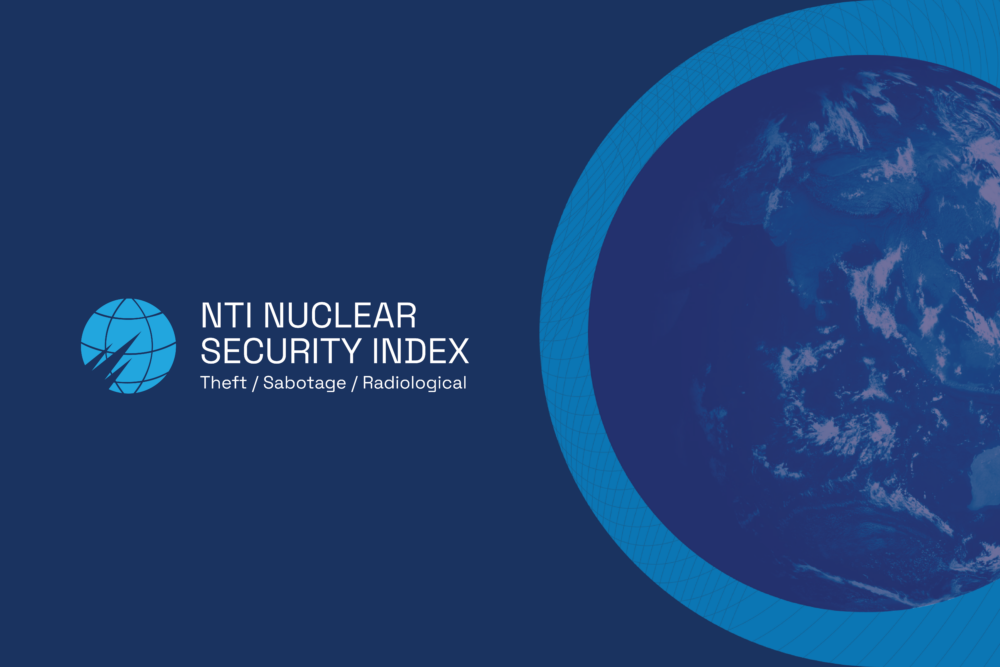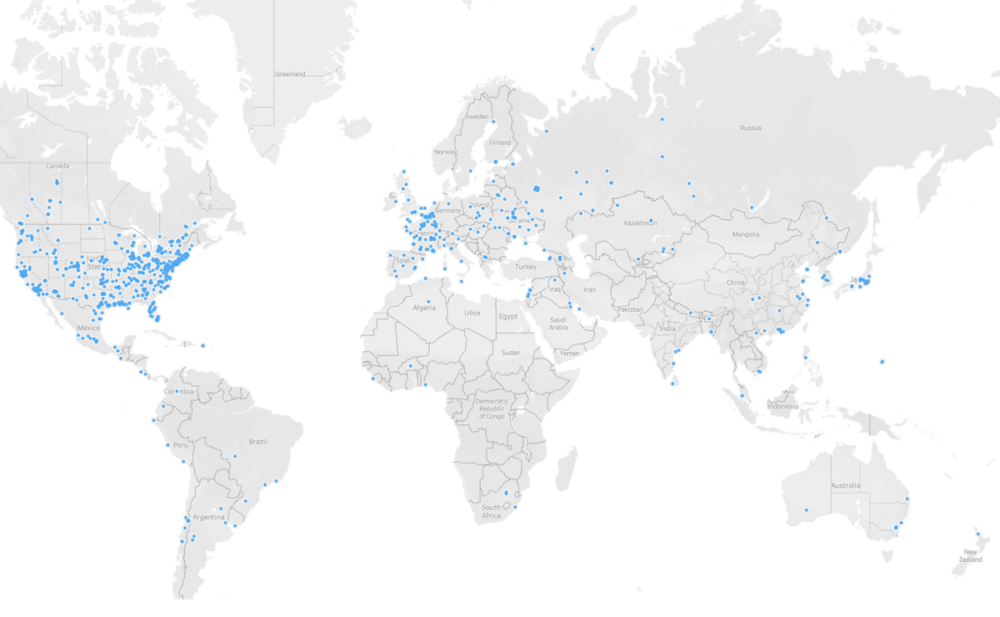
Cristina Chuen
Senior Research Associate, The James Martin Center for Nonproliferation Studies
Russia has decommissioned more than 100 nuclear submarines that must be disposed of without causing environmental damage or increasing proliferation risks. Scrapping these vessels is an expensive, hazardous, and slow process, and once the submarines have been dismantled, the resulting radioactive spent fuel and radioactive waste must be disposed of in a safe and secure manner. Since Russia lacks the money and equipment to scrap them on a timely basis. While some ballistic missile submarines (SSBNs) have been dismantled through the U.S. Cooperative Threat Reduction Program, and other U.S. programs have helped upgrade physical security and increase radioactive waste handling capacities, much more remains to be done. At the June 2002 Group of Eight (G8) summit in Kananaskis, Canada, G8 leaders committed up to $20 billion over 10 years for the "G8 Global Partnership against the Spread of Weapons and Materials of Mass Destruction." Submarine dismantlement has been identified as one of the priority areas for Global Partnership assistance. By January 2004, Russia's partners had promised over $16 billion for Partnership projects, including over $1.3 billion for concrete projects in the naval sphere. Negotiations over additional funding and project details are ongoing.
There are currently 110 general purpose nuclear-powered submarines and four nuclear-powered guided-missile cruisers that are no longer in active service in the Russian navy, and must be dismantled. Due to the large amounts of highly enriched uranium (HEU) and plutonium—the key ingredients of nuclear weapons—contained in their spent fuel, these vessels pose proliferation, as well as environmental, risks. Additional spent nuclear fuel (SNF) from 156 reactor cores is housed at four storage sites, two in the Russian Northwest and two in the Russian Far East, along with some 23,600 m3 of solid radioactive waste, and 5,300 m3 of liquid radioactive waste, with a total activity of 7.0 x 107Ci–roughly comparable to the estimated amount of radioactivity released during the 1986 Chernobyl accident.[1] These materials are also of proliferation concern. Given the technical difficulties involved in defueling a nuclear submarine, the materials at storage sites are more vulnerable than the SNF that remains in decommissioned submarines.
Russian President Vladimir Putin has identified submarine dismantlement as a top Russian priority. Nearly all of the countries involved in the Global Partnership have responded to Russia.s call to action by promising to assist in the dismantlement of Russia.s nuclear-powered general-purpose submarines, management of SNF and other radioactive wastes, and upgrading of physical security measures at relevant naval facilities. Three major technical obstacles currently prevent greater progress in Russian submarine dismantlement efforts: (1) inadequate spent fuel storage and transport capabilities; (2) the slow work pace of existing dismantlement lines; and (3) the lack of facilities for long-term storage of highly radioactive reactor compartments (for more information, see the Issue Brief on Nuclear Submarine Dismantlement). Russia.s partners have promised to address all of these issues, but much remains to be done. In addition to funding particular projects, issues of coordination, prioritization, and security provision that might impact upon the successful implementation of assistance programs remain.
As of April 2004, Italy had made the largest new commitment of funds, and has identified a variety of areas of cooperation, from submarine dismantlement and physical protection upgrades to infrastructure improvements and environmental remediation. Italy.s November 5, 2003 bilateral agreement with Russia on submarine dismantlement €360 million for naval projects, and as of April 2004 was being considered by the Italian parliament for ratification.[2,3] Eight projects have been identified for Italian participation; discussions on these projects are already ongoing, so that contracts can be swiftly concluded once the bilateral agreement has been ratified by both states.[3] Germany has also committed substantial new funds, totaling €300 million, and has already concluded four contracts with Nerpa Shipyard and one with the Kurchatov Institute. Work at Nerpa includes modernizing the facility so that submarine reactor compartments, now temporarily stored in floating units consisting of three submarine compartments, can be towed there, cut out of these floating units, given a biological shield, and welded shut in preparation for long-term storage in a new land-based facility in nearby Sayda Bay. Construction of the latter, a 5.5 hectare land-based interim reactor storage facility, is also part of Germany.s assistance program.[4] Current plans call for its construction to begin in July; the first reactors are scheduled to enter long-term storage in fall 2005.[3] This is a critical project, as approximately 40 reactor compartments from previously dismantled submarines are currently floating with insufficient security measures in Sayda Bay, and the lack of storage space in the water is stalling further submarine dismantlement activities.[5]
Several countries are expected to make significant pledges to dismantle submarines in the very near future. Canada, which has committed about $650 million to the Global Partnership, is negotiating a bilateral agreement with Russia that will enable the Canadians to fund assistance projects in the naval sphere. Russian sources indicate that they expect Canada to fund the dismantlement of three Northern Fleet submarines;[6] the Canadians themselves have yet to mention specific projects, but are keenly interested in Northwest Russia, due to their shared waters. France has also promised substantial funds for Russian assistance projects, and indicated that some of their €750 million in funding will be spend in the naval sphere. The French have been actively examining the Gremikha technical base as a possible focus of their assistance projects. Gremikha, located about 300 km east of Murmansk, in Northern Russia, is a former submarine base. Several decommissioned submarines, solid and liquid radioactive waste, and spent fuel from Alfa-class submarine liquid metal reactors remain at the site, which requires extensive remediation.[7] However, as of April 2004 negotiations with France did not appear to be moving forward quickly.
There are also donor countries that have been involved in projects related to Russia.s nuclear navy for several years, and have expanded that cooperation as part of their Global Partnership commitments. Norway issued a "Plan of Action" for work in Northwest Russia in 1994, and has been involved, for example, in improving liquid radioactive waste storage tanks at Severodvinsk, environmental remediation of the Lepse nuclear fuel storage ship (together with the Bellona environmental group, France, and the European Union), and in efforts to improve safety and security and clean up spent fuel and radioactive waste storage facilities at Andreyeva Bay, a site about 45 km from the Norwegian border. Most recently, Norway has initiated a new program to dismantle submarines. One Victor-class submarine is currently being scrapped at Zvezdochka Shipyard with Norwegian financing.[8] Another country that has recently expanded its assistance under the Global Partnership is the United Kingdom. London is now funding the dismantlement of two Oscar-class submarines, and is working at both Andreyeva Bay and the Atomflot nuclear icebreaker facility to improve spent nuclear fuel storage conditions and provide physical security upgrades. In June 2003 the United Kingdom joined Russia, Norway and the United States in the Arctic Military Environmental Cooperation (AMEC) program, which focuses on storage and treatment technologies related to submarine dismantlement.[9]
Other nations continuing to work with Russia on submarine dismantlement issues are the United States, Sweden, and Japan. The United States continues to be the largest provider of foreign assistance to Russia, totaling over $1 billion per year. In the naval sphere, the United States continues to scrap SSBNs under the Cooperative Threat Reduction program, and has provided great quantities of equipment, from radioactive waste treatment facilities to guillotine shears, that are used to facilitate SSBN dismantlement. The Department of Energy now leads programs to upgrade physical protection at naval sites and improving nuclear material control and accounting measures. Other U.S. agencies such as the Environmental Protection Agency and the State Department, are also engaged in assistance programs. While the U.S. has not expanded its assistance for submarine dismantlement since the promulgation of the Global Partnership, expansion of the AMEC program to the Pacific Fleet will reportedly be considered after a General Accounting Office (GAO) audit of the current program is completed.[10] Sweden.s $0.5 million Global Partnership commitment allows it to continue its programs to improve safety and security at Russian nuclear sites, including Andreyeva Bay and Atomflot. Japan, which pledged $100 million in aid to the former Soviet Union in April 1993 and later increased this sum to 25 billion yen (approximately $208 million), has committed a large proportion of this money to work in the naval sphere.[11] Japan initialed its first contract to dismantle a nuclear-powered submarine late last year, and intends to dismantle significant numbers of additional submarines if the initial project proves successful.[12,13]
Finally, in addition to the AMEC program and the Lepse nuclear service ship projects, mentioned above, there is one more multilateral assistance effort to which Russia.s partners have contributed significant funds: the Northern Dimension Environmental Partnership (NDEP). The NDEP was established in 2001 under the European Bank for Reconstruction and Development.s Nuclear Safety Account (itself established in January 1993), has made Northwest Russia a particular focus, and is currently funding a project to create a Strategic Master Plan for Northwest Russia. The Russian Academy of Sciences Nuclear Safety Institute's Energy Safety Analysis Center, the Kurchatov Institute, and the Dollezhal Scientific Research and Design Institute of Energy Technologies (NIKIET) began work on the first phase of this plan in early 2004. The final plan is supposed to include detailed information on all relevant naval facilities, identifying their needs, as well as analyze relevant legal and regulatory framework, and identify high-priority tasks.[14] As of April 2004, 11 countries had contributed funds to NDEP.[15]
To date, although the Global Partnership Senior Officials Group (SOG) exists to coordinate partner efforts, most countries have negotiated their assistance projects with Russia on an individual basis. This has helped speed these negotiations, but has resulted in some coordination challenges. Shipyards and other facilities are already, or will soon be, dealing with the NDEP, the AMEC program, the International Atomic Energy Agency (IAEA) Contact Expert Group and MNEPR Committee–two other multilateral organizations coordinating donor efforts in Northwest Russia, as well as the U.S. Department of Energy and Defense Threat Reduction Agency, the European Commission, Norway, Sweden, the United Kingdom, Germany, Japan, Canada, France, and Italy, as well at least a half dozen Western companies serving as general contractors. In order to make sure that these many partners neither duplicate efforts nor leave a crucial operation undone, coordination is needed. As mentioned above, the NDEP has initiated the creation of a Strategic Master Plan for Northwest Russia. There is as yet no similar plan for the Russian Far East. Such plans should make identifying duplication or gaps in assistance easier, but are not of themselves coordination measures. As the creation of a secretariat or other body to coordinate all assistance is unlikely (many countries are unwilling to surrender their decision-making powers, and such organizations are often unwieldy). Nevertheless, developing other mechanisms to coordinate assistance projects is necessary, so that gaps and duplication can be avoided.
To date, some countries have identified priority projects (for instance, U.S. efforts focus on SSBN dismantlement and related activities), but there is no overall plan that identifies priority projects. The Strategic Master Plan for Northwest Russia is supposed to prioritize projects, based primarily on safety considerations, in order to identify projects for NDEP funding. It is not clear to what degree non-NDEP projects will be covered in the plan. Moreover, there are additional considerations that should probably play more of a role in determining priorities, such as short-term security and project efficiency. For instance, spent nuclear fuel is very difficult to remove from a submarine, and is therefore quite secure before it is unloaded, and much more vulnerable thereafter. Therefore, the security of storage facilities for unloaded fuel should be ensured before submarines are defueled. As for efficiency, planners should examine how to achieve long-term goals as quickly and cheaply as possible, so long as this does not endanger short-term safety and security. Such planning might mean, for instance, that we undertake several projects in a row, using the same equipment at the same site, instead of constructing multiple facilities to simultaneously undertake similar tasks. Or it may mean delaying certain activities until other related activities are completed. For instance, money could be saved by delaying dismantlement of those submarines that are in no danger of sinking until construction of long-term reactor storage facilities have been completed.
Significant commitments have been made to assist Russia in dismantling and securing its nuclear submarines and related materials, though there are many needs that remain. Existing programs, such as those of the United States and Norway, have been joined by new projects funded by Germany, the United Kingdom, and others. A plan for assistance projects in the Northwest is being drawn up, that is supposed include details on all relevant facilities. If all donors are given access to this document, it should facilitate the coordination of assistance efforts, though more needs to be done to ensure that there are no gaps or duplication of efforts, that short-term safety and security is given proper consideration, and that funding is spent to achieve long-term efficiency.
[1] IAEA Contact Expert Group meeting, The Hague, Netherlands, April 23-25, 2003.
[2] Ann MacLachlan, "Sogin leads Italian projects for Russian nuclear sub cleanup," Nucleonics Week, 20 November 2003, p. 12.
[3] "Sergey Antipov: .Nasha zadacha — sdelat tak, chtoby proiskhodyashchiye izmeneniya ne ukhudshili situatsiyu.," Minatom.ru, 12 April 2004.
[4] "German-Russian Project for the Safe Disposal of Nuclear-Powered Submarines in Northwest Russia," German Ministry of Economics and Labour, www.bmwi.de.
[5] "Der deutsche Beitrag zur G8-Globalen Partnerschaft gegen die Verbreitung von Massenvernichtungswaffen und -materialien," German Foreign Ministry, www.diplo.de, July 7, 2003.
[6] Interview with Deputy Minister of Atomic Energy Sergey Antipov, Arms Control and Security Letters No. 9 (November 2003).
[7] "Russia: Gremikha Naval Base," NIS Nuclear and Missile Database, www.nti.org.
[8] Zvezdochka Defense Shipyard started cutting a Multi-purpose NS under Russia-Norway Contracts," 15 August 2003, www.nuclear.ru.
[9] "United Kingdom Joins Arctic Environmental Cooperation," U.S. State Department, www.usinfo.state.gov, 19 June, 2003.
[10] E-mail correspondence with AMEC personnel, April 12, 2004.
[11] "Russia: International Assistance Programs: Japan," NIS Nuclear and Missile Database, www.nti.org.
[12] Interview with Deputy Minister of Atomic Energy Sergey Antipov, Arms Control and Security Letters No. 9 (November 2003), PIR Center.
[13] Interview of Japanese Ministry of Foreign Affairs officials cited by Dr. Nobumasa Akiyama, Hiroshima Peace Institute, Japan, November 2003.
[14] "Northern Dimension Environmental Partnership Strategic Master Plan Terms of Reference," 26 January 2004.
[15] www.ndep.org.
[16] "Canada pledges €20 million to Barents Sea cleanup," 4 June 2003, www.ebrd.com.
[17] "Prime Minister Announces G8 Global Partnership Projects," May 30, 2003, Prime Minister of Canada, www.pm.gc.ca.
[18] G8 Senior Officials Group Annual Report.
[19] "Fact Sheet: Five Countries Join Global Partnership Against WMD," U.S. Embassy Islamabad, https://usembassy.state.gov.
[20] IAEA Contact Expert Group meeting, The Hague, Netherlands, April 23-25, 2003.
[21] According to the G8 Senior Officials Group Annual Report, Germany has committed an amount of €1.5 billion, whereas the German Foreign Ministry Website cites an amount of up to €1.5 billion. "Der deutsche Beitrag zur G8-Globalen Partnerschaft gegen die Verbreitung von Massenvernichtungswaffen und -materialien," German Foreign Ministry, www.diplo.de, July 7, 2003.
[22] "Minister Frattini and Igor Ivanov Signed Two Bilateral Agreements, One on Italian Assistance in the Dismantling of Russian Nuclear Submarines and One on the Destruction of the Former Soviet Union.s Chemical Weapons," Ministry of Foreign Affairs of Italy, www.esteri.it, November 5, 2003.
[23] "Italiya vydelit Rossii do 360 mln evro v techeniye 10 let dlya utilizatsii rossiyskikh atomnykh podvodnykh lodok," ITAR-TASS, November 6, 2003; in Yadernyy kontrol, November 5-12, 2003.
[24] CNS interview with Deputy Minister of Atomic Energy Sergey Antipov, Interparliamentary Conference (European Commission Non-Proliferation & Disarmament Co-operation Initiative), Strasbourg, France, November 20-21, 2003.
[25] Transcript of interview with Antipov in Arms Control and Security Letters No. 9 (November 2003).
[26] Interview of Japanese Ministry of Foreign Affairs officials cited by Dr. Nobumasa Akiyama, Hiroshima Peace Institute, Japan, in e-mail communications with CNS, November 2003.
[27] Oksana Polishchuk, "Russia welcomes affiliation of more states to G8 initiative," ITAR-TASS News Agency, July 4, 2003.
[28] "Nuclear Safety Programme," Department of Trade and Industry, www.dti.gov.uk, July 3, 2003.
[29] "Chemical Weapons Destruction," DFAIT Website, op. cit.
[30] According to the G8 Senior Officials Group Annual Report, the United Kingdom has committed an amount of $750 million, whereas the Foreign & Commonwealth Office cites an amount of up to $750 million. "UK launches major work with Russia to prevent proliferation of WMD," Foreign & Commonwealth Office Press Releases, www.fco.gov.uk, June 26, 2003.
[31] Remarks by Ambassador of Japan to the Russian Federation Issei Nomura, at conference "The G8 Global Partnership Against the Spread of Weapons and Materials of Mass Destruction," Moscow, Russia, April 23, 2004.
[32] E-mail communication from Deputy Minister of Atomic Energy Sergey Antipov, April 19, 2004.
Sign up for our newsletter to get the latest on nuclear and biological threats.
Assessing the progress made by UN First Committee on furthering international nonproliferation and disarmament goals during its 2007 session. (CNS)
“The bottom line is that the countries and areas with the greatest responsibility for protecting the world from a catastrophic act of nuclear terrorism are derelict in their duty,” the 2023 NTI Index reports.
The only public database of its kind, includes global nuclear & radiological security trends, findings, policy recommendations, and interactive visualizations.

